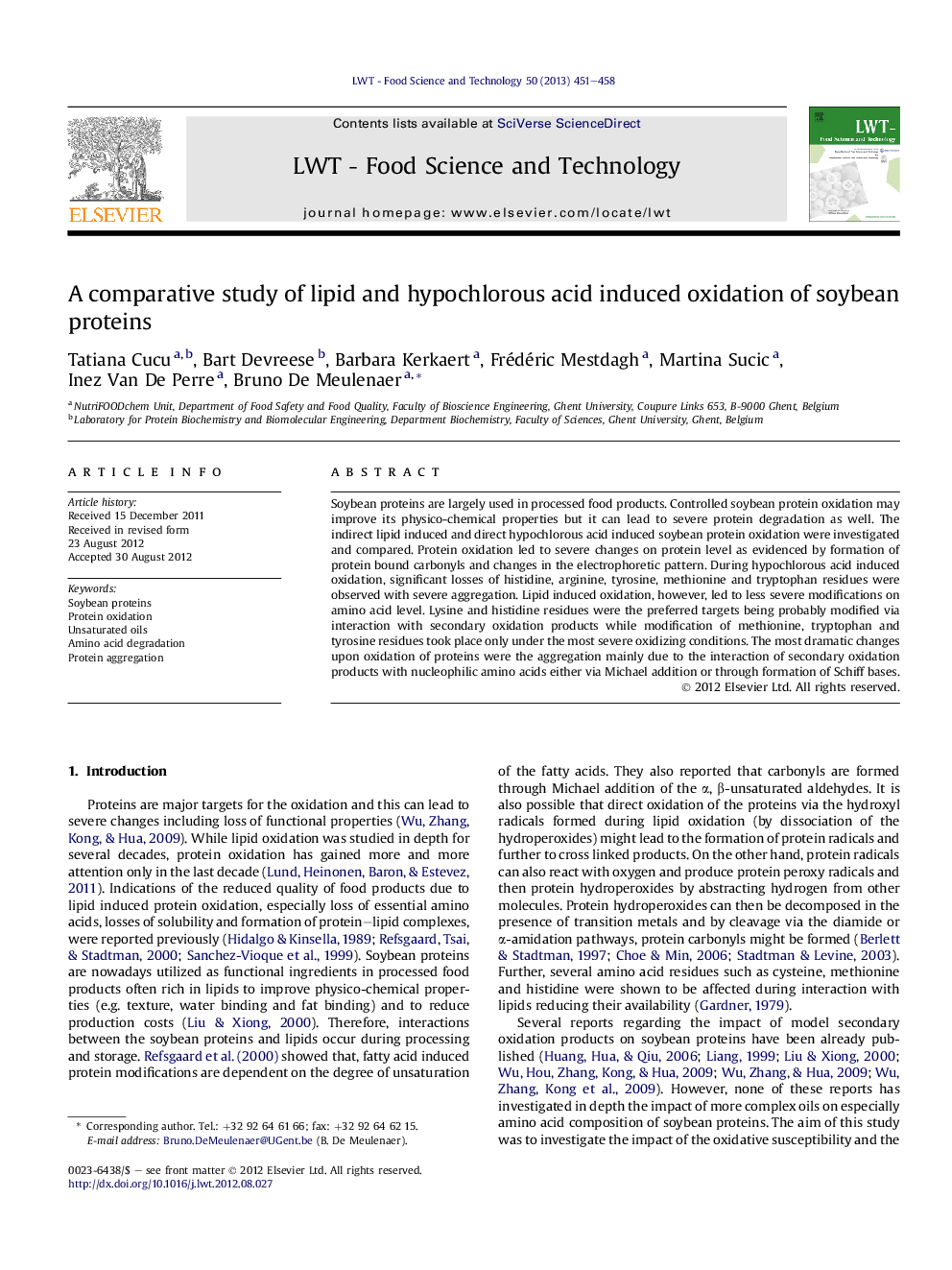| کد مقاله | کد نشریه | سال انتشار | مقاله انگلیسی | نسخه تمام متن |
|---|---|---|---|---|
| 6404856 | 1628534 | 2013 | 8 صفحه PDF | دانلود رایگان |
Soybean proteins are largely used in processed food products. Controlled soybean protein oxidation may improve its physico-chemical properties but it can lead to severe protein degradation as well. The indirect lipid induced and direct hypochlorous acid induced soybean protein oxidation were investigated and compared. Protein oxidation led to severe changes on protein level as evidenced by formation of protein bound carbonyls and changes in the electrophoretic pattern. During hypochlorous acid induced oxidation, significant losses of histidine, arginine, tyrosine, methionine and tryptophan residues were observed with severe aggregation. Lipid induced oxidation, however, led to less severe modifications on amino acid level. Lysine and histidine residues were the preferred targets being probably modified via interaction with secondary oxidation products while modification of methionine, tryptophan and tyrosine residues took place only under the most severe oxidizing conditions. The most dramatic changes upon oxidation of proteins were the aggregation mainly due to the interaction of secondary oxidation products with nucleophilic amino acids either via Michael addition or through formation of Schiff bases.
⺠In this study lipid and hypochlorous acid induced soybean protein oxidation was investigated. ⺠Protein oxidation led to formation of protein bound carbonyls, losses of amino acids and changes in the SDS-PAGE pattern. ⺠Hypochlorous acid induced oxidation led to losses of histidine, arginine, tyrosine, methionine and tryptophan residues. ⺠Lysine and histidine residues were the preferred targets during lipid induced oxidation.
Journal: LWT - Food Science and Technology - Volume 50, Issue 2, March 2013, Pages 451-458
